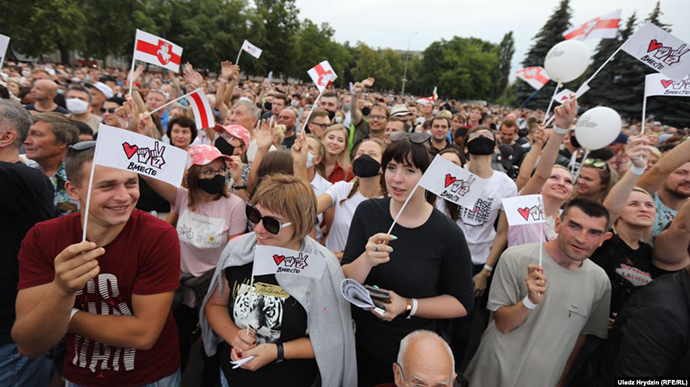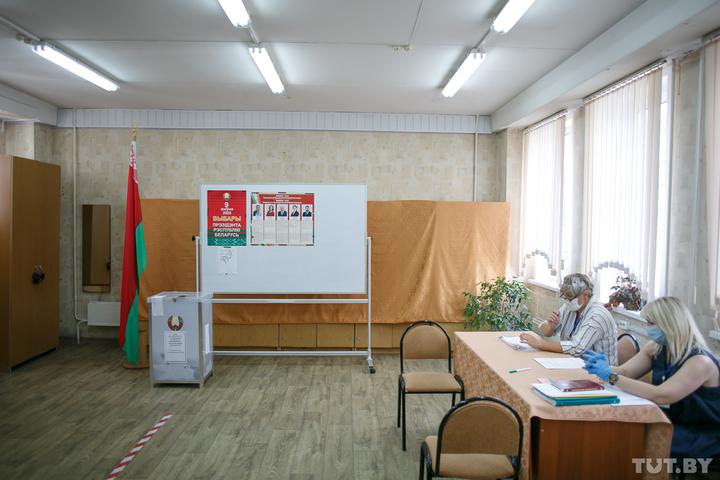On Saturday, 29 August, a 10,000-strong Women's March was held in Minsk, the capital of Belarus where protests against rigged elections are into their third week. Similar marches were held in other Belarusian cities.
The protests calling on self-proclaimed president-elect Alyaksandr Lukashenka to resign and fresh elections to be held already had a feminine face. It was a women's trio who stood up to "last dictator of Europe" Lukashenka; it was the housewife-turned-presidential candidate Sviatlana Tsikhanouskaya who became Lukashenka's unexpected challenger; and it were solidarity chains of white-clad women proliferating in cities big and small that served as the perfect opposition to the strongman - and his brutal riot police.
Flowers stronger than guns as “Ladies in White” protests spread throughout Belarus
The women's march was spectacular because violence against women, at least in public, is considered savage. Were the riot police to commit brutalities against the women, many of whom emphasize their femininity, it would delegitimize Lukashenka's regime even further.
The march was opened by a legendary grandmother - the 73-year-old Nina Baginskaya, whose defiant brandishment of the banned white-red-white national Belarusian flag since 1988 earned her thousands of dollars in fines - and a special place in the hearts of protesters.
Bearing a new flag that she sewed herself (her old one was confiscated by the riot police a few days ago), her appearance in the middle of the avenue served as a signal for the others to start moving.


Maria Kalesnikava, the only member of the women's trio driving Tsikhanouskaya's campaign remaining in Belarus and member of the presidium of the Coordination Council set up by the opposition to facilitate a peaceful transfer of power, also came to the protest:

Riot police attempted to break up the columns of women, but to no success.
Wow! Belarusian OMON (riot police) is powerless against Belarusian women. 10 thousand people took part in Women's March today in Minsk. Riot police were trying to block the streets and disperse protests with no success. pic.twitter.com/hfXPHWsEQT
— Franak Viačorka (@franakviacorka) August 29, 2020





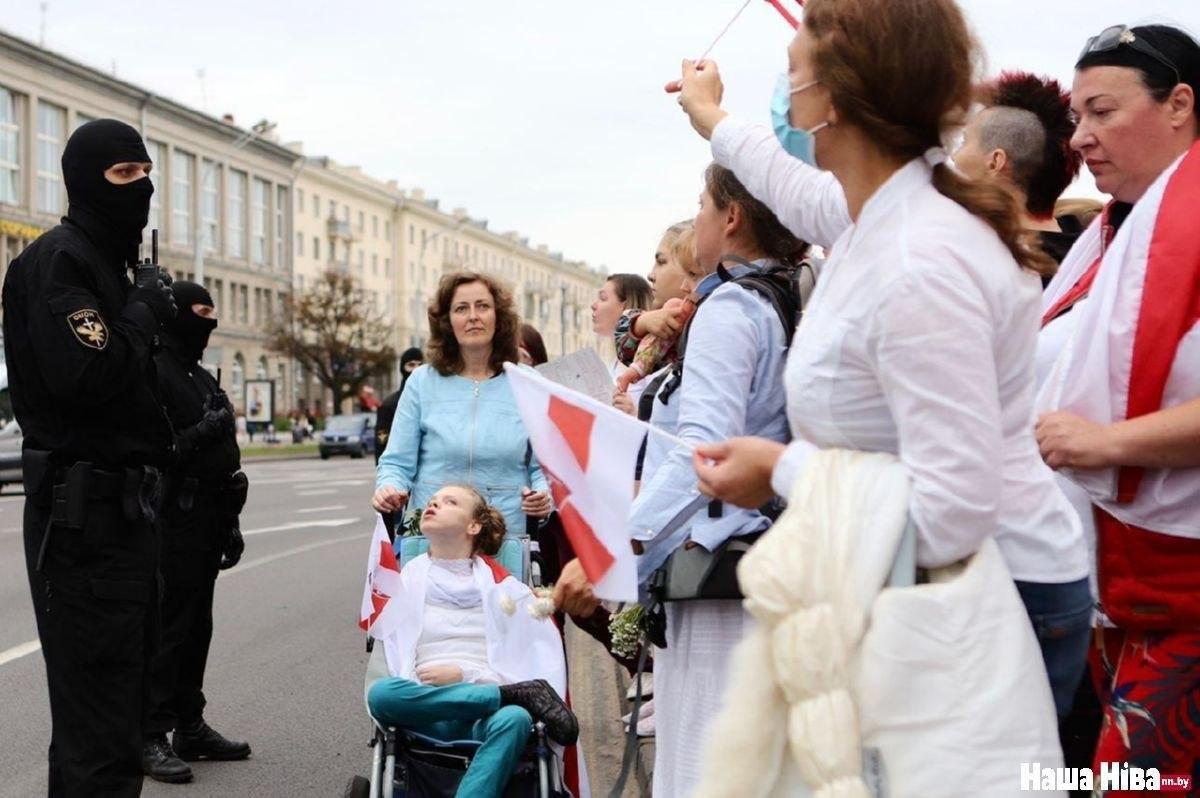

The women had even protected a journalist from being grabbed by the riot police!
Trust in independent media increased immensely in the past months (due to the pandemic,but not only). Watch how protesters defended a journalist who was nearly detained by plain clothes officers. There are more examples like that, it happens all the time at rallies pic.twitter.com/BkDzB2wPdt
— Hanna Liubakova (@HannaLiubakova) August 29, 2020
Nevertheless, the riot police did arrest protesters. According to the official information of the Ministry of Internal Affairs, 29 people were arrested.
Detentions begin. You can see riot police detaining protesters in the trolleybus. Today, Riot police did not exercise violence against women. We also saw many women in riot police uniform. Real OMON targeted male protesters and journalists. At least 6 reporters were detained. pic.twitter.com/GD2NOapOnb
— Franak Viačorka (@franakviacorka) August 29, 2020
There were many creative signs at the march.

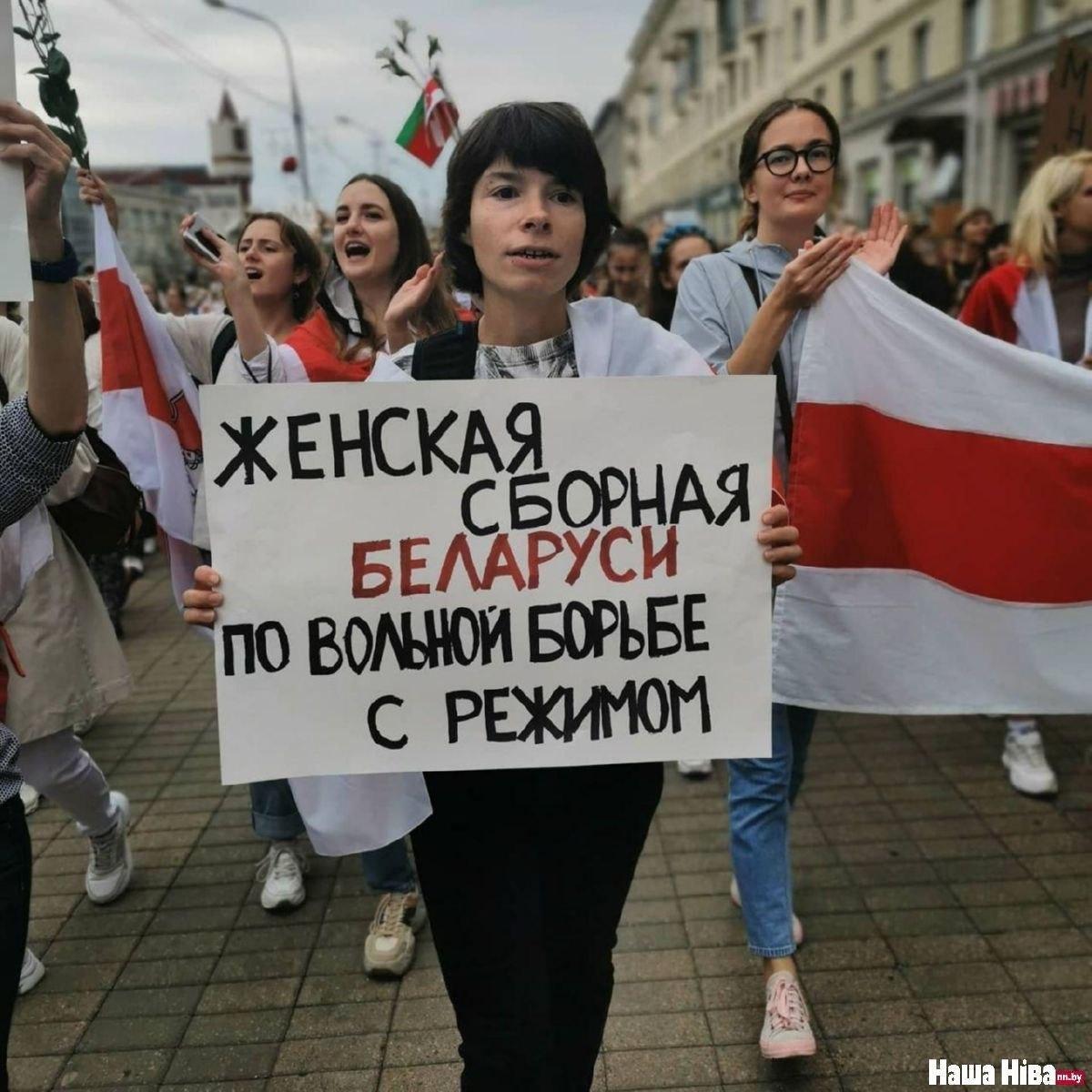


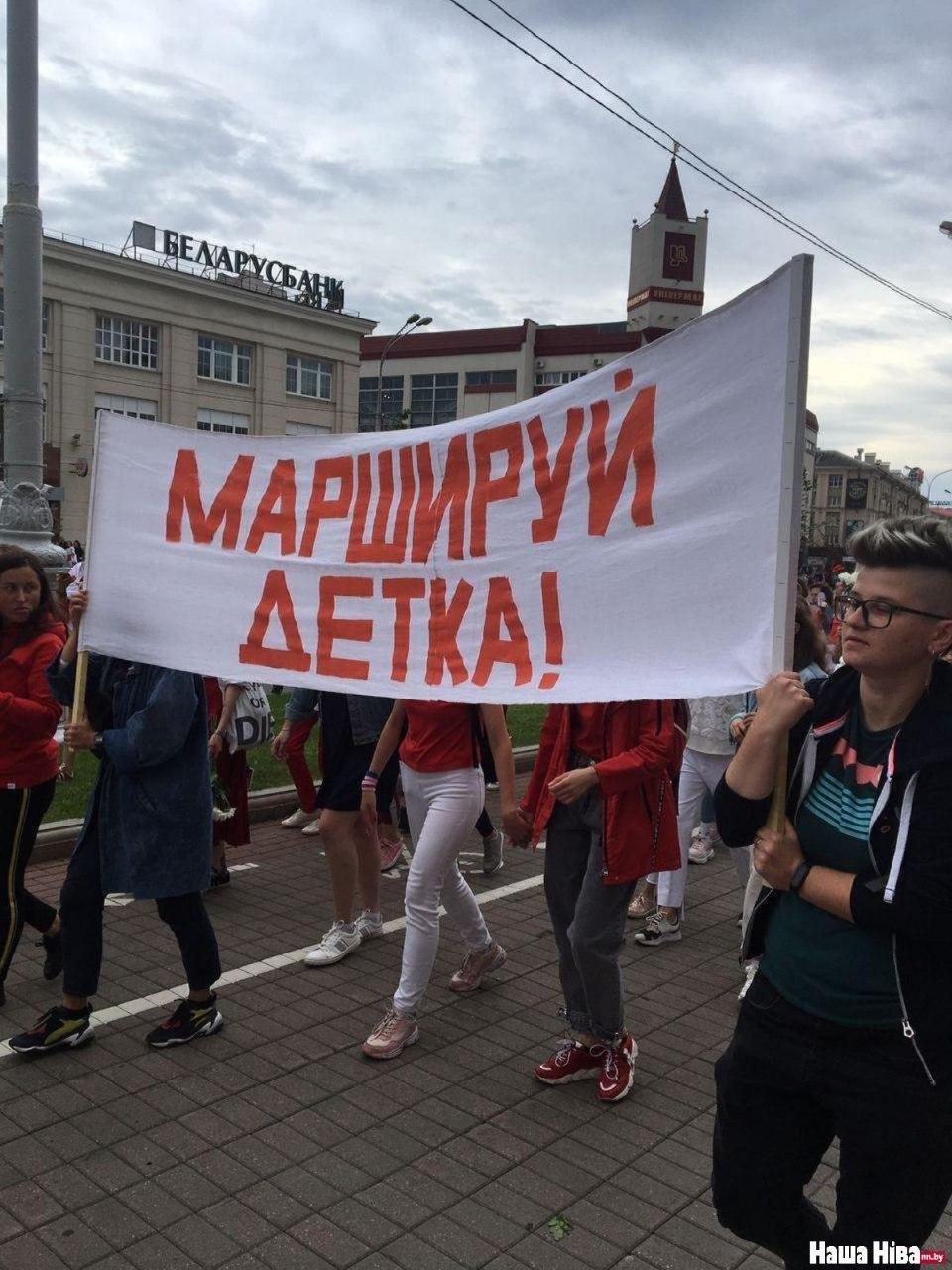
Belarusian journalist Franak Viacorka noted
that the women gave a new breath to the protests, which keep on going despite blows from Lukashenka's regime: arrests of strike leaders and regional activists, upcoming deportations of foreign journalists, hundreds of new detainees.
As well, he wrote that the women on the streets took the riot police by surprise:
Today women have opened the second front of protests. Ladies behaved bravely, approached OMON with a smile, defended guys and journalists when riot police attacked. Fearless, they broke OMON chains twice. It seems that police had no order to beat. No one planned such development pic.twitter.com/BhWhXBxwV7
— Franak Viačorka (@franakviacorka) August 29, 2020
"Women broke the pattern yesterday," noted the independent outlet Nasha Niva:
"The siloviki [codename for various law enforcers propping up regimes in post-Soviet countries - Ed] were bewildered: they could not disperse or demoralize the participants of the peaceful march led by the legendary Nina Boginskaya.
The paddy wagons, barbed wire-vehicles, and water cannon sent against the Belarusian women looked hilarious.
By blocking the women's way to the center, the security forces provoked a multi-kilometer festive march through the city. The women seeped through the chains like water, circling, changing their route. They passed Independence Avenue, Khoruzhaya and Bahdanovich streets. They were followed by the paddy wagons with riot police - the women occupied the street and did not allow them to drive forward."
Protests against what is certainly a rigged election in which Alyaksandr Lukashenka claimed 80.1% of the votes started on 9 August and have continued ever since. On 26 August, the Supreme Court of Belarus turned down all claims of other candidates for the annulment of election results. Lukashenka's contender Svitlana Tsikanouskaya left the country for Lithuania; a Coordination Council has been established by the opposition with the aim of peacefully transferring power. Thousands have been detained across the country amid reports of brutalities and torture committed by riot police.
Read also:
- What you need to know about the unprecedented Belarus presidential election, in a nutshell
- How Alyaksandr Lukashenka stole the Belarus presidential election
- The world’s first Telegram revolution: how social media fuel protests in Belarus
- From ambassadors to sports heroes – Belarusian protests encompass all social groups
- 50 women in a cell for four: Belarusian election observer tells of being jailed
- Portnikov: Belarus should be seen through prism of Ukraine’s 2004 Orange Revolution, but not 2014 Euromaidan
- “State is a machine ready to crush anyone”: Ukrainian released from Belarus jail describes detention cruelties
- An introduction to the White-Red-White flag of Belarus, and the Belarusian politics of memory
- Why are protesters in Belarus using the white-red-white flag?


